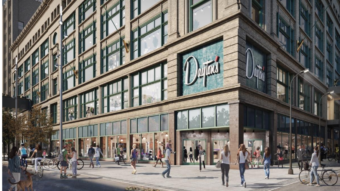Does Chicago lack the sites that retailers are increasingly looking for today? A new study by Chicago’s Mid-America Real Estate Corporation suggests that this might be the case.
According to the report, much of the city lacks the type of product that today’s downsized big-box retailers — known in the industry as mid-box retailers — are searching for today.
“Retailers’ footprints are shrinking,” said Mid-American principal Dan Tausk, author of the report, in a writtten statement. “From Wal-Mart to Best Buy to Office Depot, we continue to see a national trend toward shrinking square footage, which is expanding the vernacular from ‘super’ or ‘mega’ stores to include ‘market,’ ‘express’ and ‘neighborhood’ stores.”
And if this trend continues, something that Tausk says is likely? That could mean trouble for Chicago. Tausk says that Chicago doesn’t have enough of these smaller sites to attract today’s more space-conscious retailers.
The study found that Chicago’s Central City — identified in the report as Zone 1 — carried 34 percent of the mid-box supply while home to only 8.6 percent of the city’s population. The city’s central area includes State Street, Michigan Avenue and the Lincoln Park neighborhood, all busy areas.
However, the study also found that several highly populated high-income submarkets of the city are home to nearly no mid-box retail supply in the now-desirable size range. These areas include the busy communities of River Forest, Lincoln Square, West Loop and Bucktown.
Tausk writes that while there is demand for mid-box growth in urban Chicago, the existing supply is simply too tight and nearly non-existent in some of the areas that would otherwise be most attractive to retailers.
The conclusion? Retailers who want to expand in Chicago will need to be creative. This means that they’ll have to consider multi-level buildings if they want to fit into the most attractive neighborhoods of the city.



